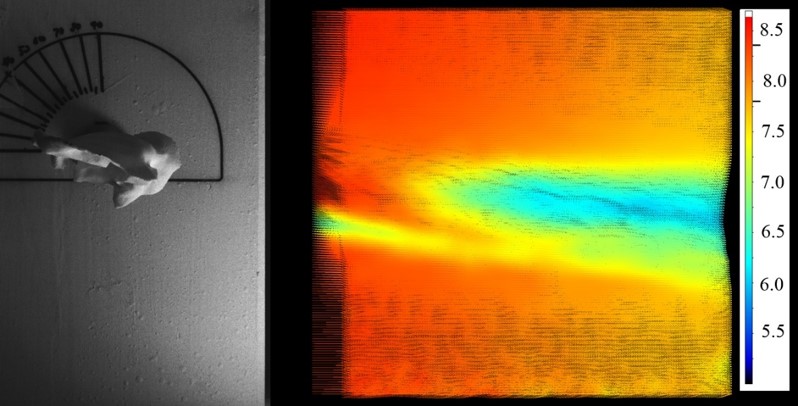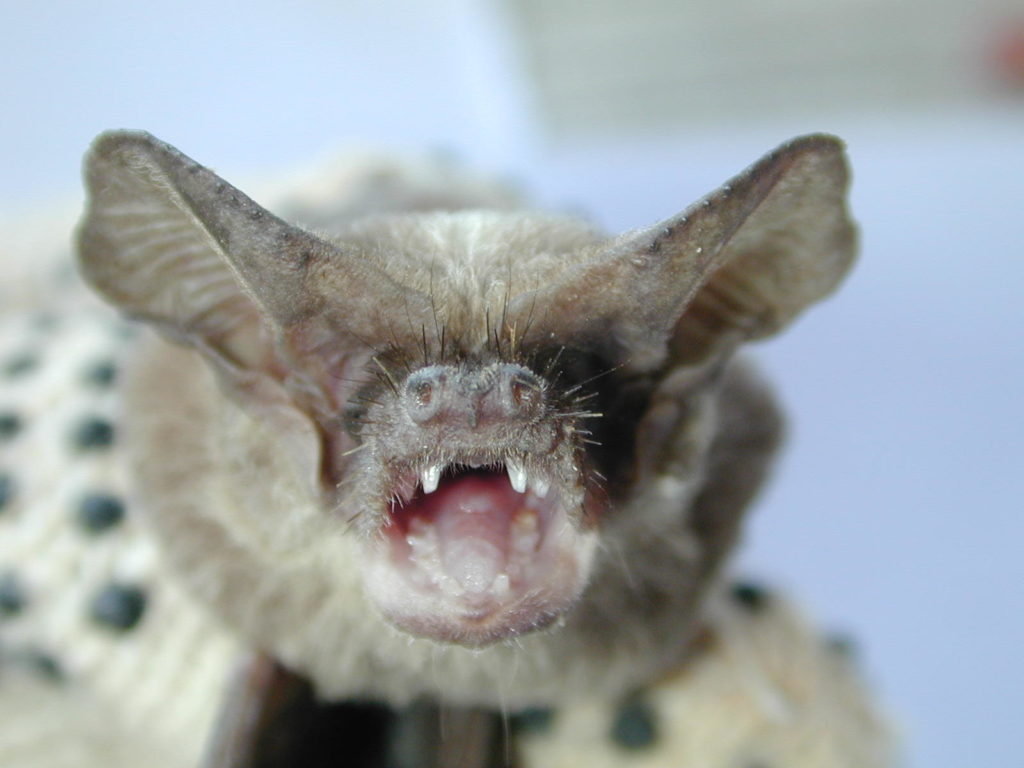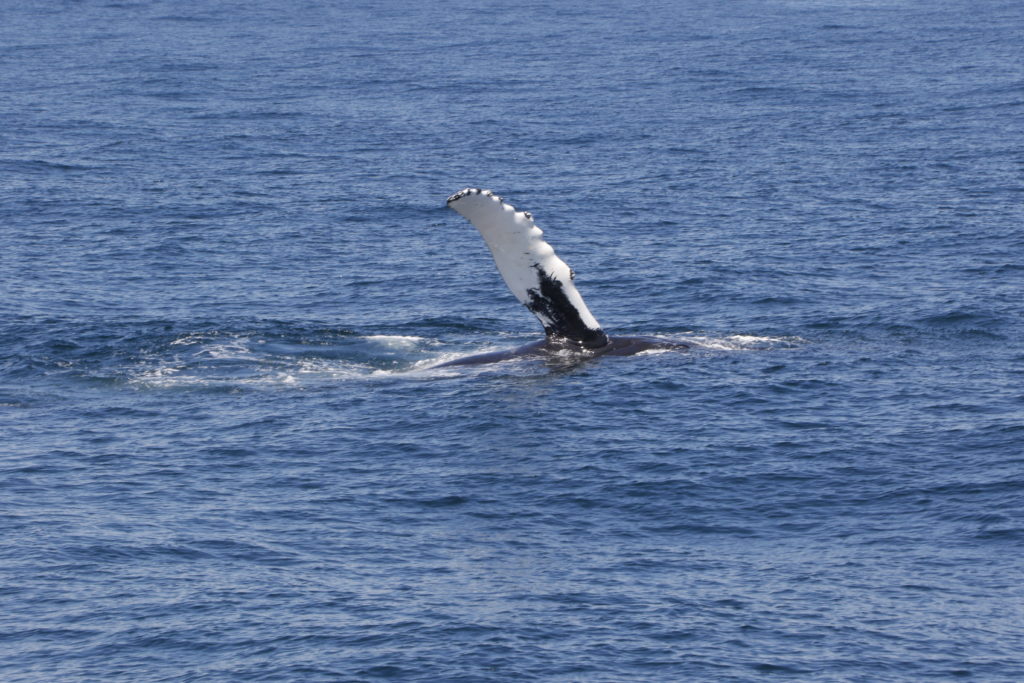
Overview
The Brazilian (or Mexican) free-tailed bat (Tadarida brasiliensis) has small bumps or tubercles along the dorsal leading-edge of the ears. The tubercle pattern is similar to that of the humpback whale (Megaptera novaeangliae), which typically has 9-10 tubercles on the leading-edge of the pectoral flippers. These tubercles have been shown to increase the maneuverability of the whale due in part to delaying stall on the flipper (the control surfaces of the whales) at high angles of attack, thereby assisting the whales in performing precise, coordinated movements within a pod. Like humpback whales, this species of bat is extremely agile and displays rather unique flying behavior. This project studies the impact of these tubercles on the aerodynamic performance.
Selected Publications
- Trevor Martin (2017) “Flow modification by tubercles in Brazilian free-tailed bats,” M.S. Thesis, Oklahoma State University, Stillwater, OK.
- CE Petrin, T Martin, W Caire, ML Thies & BR Elbing (2018) “Modification of drag on the ear of Brazilian free-tailed bats (Tadarida brasiliensis) via leading-edge tubercles,” 2018 AIAA Aviation and Aeronautics Forum and Exposition, FD-09 Bio-Inspired Fluid Dynamics, AIAA2018-2917, Atlanta, GA (June 25-29) (doi.org/10.2514/6.2018-2917).
- SJF Fisher, AS Alexander and BR Elbing (2020) “Computational model of flow surrounding Brazilian free-tailed bat ear tubercles,” 2020 AIAA SciTech Forum, Fluid Dynamics: Bio-Inspired and Low-Reynolds Number Flows, AIAA-2020-2021, Orlando, FL (6-10) (doi.org/10.2514/6.2020-2021).



